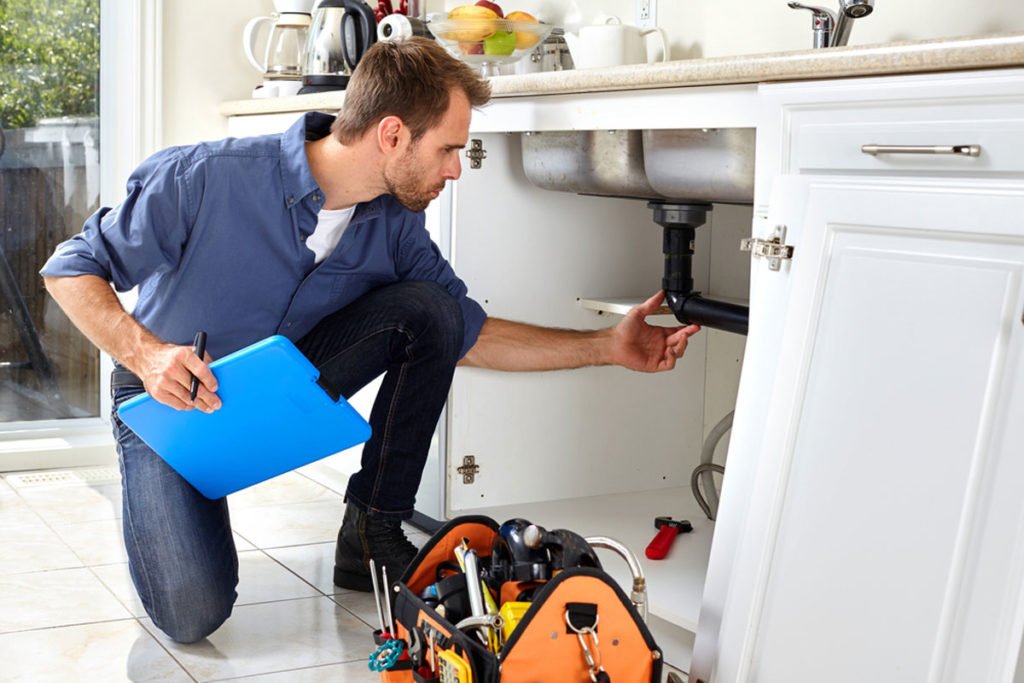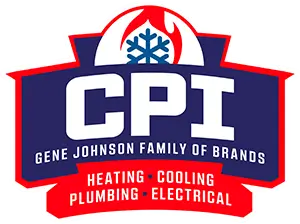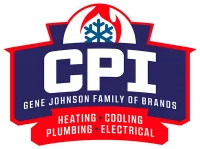How to Clear a Blocked Kitchen Sink
There’s nothing quite as maddening as a clogged kitchen sink rendering your primary prep and cleaning area completely unusable. One minute you’re rinsing vegetables or washing dishes, the next you’re staring down a backed-up, smelly pooling mess with water stubbornly refusing to drain.
Fortunately, most kitchen sink clogs are pretty manageable to clear on your own with some DIY know-how. This guide covers everything you need to confirm the clog severity, understand what could be causing the blockage, and implement effective techniques for dislodging even the most stubborn of clogs using affordable tools and household items.
You’ll learn methods like plunging, baking soda and vinegar treatments, drain snakes, and more to get that water flowing freely again. We’ll also go over when it’s time to call in professional reinforcements if the clog won’t budge.
Don’t resign yourself to a foul, unusable kitchen sink. Follow these tips to get that drain cleared out so you can enjoy the simple glory of watching dirty water successfully go down once more.

Identifying the Severity of the Blockage in Your Kitchen Sink
Not all sink blockages are created equal. Before attempting to clear a clog, it’s important to assess the severity and potential scope of the issue. Is water just draining slowly with a lazy trickle? Or is it completely stagnant with no drainage at all? Have you already tried basic unclogging methods with no success? Here are some telltale signs to look for:
Water Drainage Speed
Paying close attention to how quickly or slowly water is draining provides an initial clue about the magnitude of the clog you’re dealing with. A sink that is draining very sluggishly with just a lazy trickle making its way down likely indicates a significant blockage that’s restricting normal flow. On the other hand, if water seems to be draining at a reasonable pace with just some slowness, the clog may be relatively minor.
The most severe type of blockage is when you have absolutely no drainage occurring at all – a full bathtub effect with water completely stagnant and unable to go down even slightly. This signals that the pipes are 100% blocked by a solid mass of clogging material. With no space for any water to sneak through, this qualifies as an emergency-level clog that requires prompt unclogging.
Response to Basic Methods
Another good way to gauge clog severity is based on whether or not you’ve already attempted some basic unclogging methods with no success. If you’ve given the standard sink plunger treatment a solid effort with no improvement in drainage at all, that shows the clog is likely quite stubborn and deeply rooted.
Similarly, if you went ahead and used a liquid drain cleaning product as recommended but it didn’t make even the slightest difference, that’s a strong indicator of a blockage significant enough to resist normal chemical decloggers. When extremely straightforward fixes like plunging and drain openers don’t provide any relief, it’s a safe bet you’re dealing with a pretty major clog.
Check for Gurgling Sounds
Listen very carefully around the sink drain, even when no water is running, and see if you can detect any gurgling, bubbling, or gasping noises. These gurgling sounds indicate that air is getting trapped in the pipes and having difficulty passing through whatever is clogging the line.
When water goes down a clear drain, it flows smoothly and air can easily vent through. But a significant obstruction causes that air to get trapped behind the blockage, creating those telltale gurgling sounds as it forcibly tries to push its way through. The more frequent and pronounced the gurgling, the more solid the clog likely is.
While some minor gurgles could just be normal drainage sounds, frequent loud gurgling noises emanating from the sink are a sure sign you’ve got a very stubborn, severe blockage on your hands. It’s the pipes effectively “gasping for air” due to the clog.
Presence of Foul Odors
Your nose can also clue you in to a potentially serious sink clog situation. As water stagnates in the pipes and debris collects due to a blockage, it creates a prime breeding ground for bacteria and mold growth. This trapped standing water takes on an extremely unpleasant, rotten, sewage-like odor.
If you detect strong foul smells wafting up from the kitchen sink drain, even when no water is running, it indicates that a clog is present and has likely been building for a while. The more pungent and repulsive the odor, the more severe that clog probably is in terms of size and longevity.
Drain clogs don’t just impede water flow – they also enable bacteria build-up and mold that create those telltale disgusting aromas. As soon as you get a whiff of those sewage stenches around the sink, it’s a red flag that intervention is needed before the blockage really takes root.
Multiple Affected Fixtures
While a clogged sink is frustrating enough on its own, the situation becomes even more severe if you notice slow drainage or backups spanning other fixtures and drains throughout the home as well. If it’s not just the kitchen sink affected but also bathroom sinks, tubs, showers, floor drains, and more experiencing extremely sluggish drainage, it likely points to a much larger clog in the mainline sewer pipe.
Since all of a home’s individual drain lines eventually converge into one main sewer lateral before exiting the property, a solid blockage in that main line will create backed-up conditions for drain outlets all throughout the house. Multiple fixture backups indicate a significant mainline blockage rather than just a single sink clog.
Recurring Clogs
Does it seem like no matter what method you try, from plunging to snaking to chemicals, the kitchen sink always ends up clogging back up again just days or weeks later? This recurring cycle of temporary clears followed by quick re-clogs signals a deep-rooted, systemic issue rather than just a random one-off clog.
Recurring blockages are often caused by deteriorating pipes, obstructions like tree roots that regrow after being snaked, or improper pipe sloping that allows debris to perpetually re-settle. If you can’t seem to get lasting relief from a clog no matter how thoroughly you try to clear it, there’s likely an underlying problem creating chronic conditions for clogs to keep forming.
Visible Backup
Perhaps the most obvious and severe sign that you have a major sink clog emergency on your hands is visible backflow. When the kitchen sink drain becomes so clogged that water begins spilling up and over the sink basin itself, frequently bringing back up chunks of food debris, this scene indicates an extreme blockage.
At this point, any attempt at using the sink only worsens the unsanitary overspill and risks water damage to your counters and cabinetry. Trying to plunge or snake a sink with this much water backup is also extremely messy. Once you see wastewater forcibly coming back up through the drain, it’s time to stop what you’re doing and get professional assistance to hydro jet that clog.
By closely monitoring for telltale signs like slow drainage, gurgling air noises, recurring clogs, foul odors, and visible backflow, you can accurately assess the magnitude and severity of a kitchen sink blockage. Don’t wait for a clog situation to escalate into a full-blown emergency before addressing it. The earlier you can accurately identify a significant obstruction, the sooner you can take corrective action to clear it before potential water damage occurs.
Types of Kitchen Sink Blockages
To effectively clear a stubborn kitchen sink clog, it’s helpful to first identify the likely type of blockage material you’re dealing with. Clogs can form from a variety of culprits, and knowing their source can inform the best techniques for dislodging them.
Grease and Fat Blockages
Pouring greasy cooking oils, meat fats, butter, or lard down the sink is one of the most common causes of nasty clogs. While these substances are liquid at first, they quickly congeal and solidify as they cool, sticking stubbornly to the insides of drain pipes. Over time, this buildup of hardened grease creates thick, gunky obstructions.
Even if you’re careful to avoid dumping large amounts of fats down the drain, it only takes seemingly small quantities to accumulate into problematic clogs. Things like greasy pasta water, meat drippings, or oil used for frying can leave residual coatings inside pipes that worsen over time as new layers are added.
Food Particle Clogs
All those little bits of food prep waste and scraps that get rinsed off plates and cutting boards into the kitchen sink can also spell clogging disaster if not strained properly. Vegetable peelings, fruit stickers and stems, overflowing cereal and crumbs, eggshells, coffee grounds – these fibrous, granular food particles have a way of binding together and compacting into solid drain obstructions.
Foreign Object Blockages
From accidentally knocking a utensil into the sink to a child’s dropped toy making its way down the drain, all sorts of inorganic objects can create sudden full pipe blockages. Common culprits include twist ties, bottlecaps, jewelry, coins, and any small household items or kitchenware that falls through the drain opening. These blockages are usually situated very low in the p-trap or drain pipe, making them difficult to dislodge even when locating the stuck object.
Mineral Buildup
If you have particularly hard water in your home, mineral deposits like limescale and calcium can build up over years of use, coating the inside of drain pipes. This crusty buildup creates restrictions on water flow and can worsen existing clogs caused by hair, soap scum, and food debris by narrowing the pipe diameter.
Soap Scum and Organic Matter Blockages
Things like congealed soap residue, shampoo and conditioner, shed body hair, and other organic materials like skin cells, pet fur, and even human hair all accumulate in kitchen sink drains gradually. Left unchecked, this slimy mixture of biological matter compacts and hardens over time until water flow becomes obstructed.
By understanding which of these common clogging culprits you may be dealing with, you can better strategize the appropriate method for breaking it down and clearing it out, whether via chemical treatments, manual removal tools, or professional hydro-jetting equipment.
Tools and Materials for Unclogging
Having the right tools and supplies on hand can make the difference between a quick and easy sink unclogging job versus a prolonged battle with a clog. Before attempting to clear any kitchen drain blockage, it’s wise to assemble the appropriate unclogging arsenal. Here are some essential items to have at the ready:
Plunger
This basic tool is likely the first thing you’ll reach for when facing a clogged kitchen sink. A standard cup-style plunger creates forced air pressure to dislodge clogs when worked vigorously. Look for a sturdy rubber model that will create a tight seal over the drain opening.
Plumber’s Snake (or Drain Auger)
Also called a plumber’s snake or drain auger, this is a long, flexible steel cable with a coiled wire head on one end. It allows you to manually bore into and hook onto clogging material to pull it out from the drain. Having at least a basic 25-foot model gives you good reach into pipes.
Baking Soda and Vinegar
This common household duo creates an incredibly handy chemical reaction when combined. As the vinegar meets the baking soda, it triggers bubbling and fizzing that works to help break down organic matter and grease clogs from the inside. Keep these pantry staples stocked for basic drain maintenance.
Boiling Water
A kettle or pot of boiling hot water can provide an effective, natural way to dissolve grease, hair, and soap scum blockages. The extreme heat helps to remelt and flush away solidified clog materials when poured directly down the drain in ample volumes.
Chemical Drain Cleaners
For tougher clogs that won’t budge, a chemical drain opener cleaner may eventually be needed. These caustic cleaning products utilize active enzymes or harsh base compounds like lye or sulfuric acid to chemically dissolve through clog materials. Use with caution as they can be toxic and potentially damaging to older pipes.
Wet/Dry Vacuum
Once you’ve broken up or dislodged a clog, it’s important to suction out any wastewater mess to clear the pipes. A wet/dry utility vacuum with a hose attachment allows you to vacuum directly over the drain opening to suction out any loosened debris and water.
Drain Cleaning Bladder
For clogs that just won’t budge no matter what, a drain cleaning bladder is sometimes the last resort before calling a professional. This inflatable rubber device attached to a stick can be snaked down the drain and expanded to create immense force for breaking through compacted clog materials.
Having these tools and supplies within reach allows you to tackle just about any sink clog scenario through either gentle techniques or more heavy-duty force as needed. Always start with the easiest, least invasive methods first before escalating to harsher approaches to avoid unnecessary pipe damage.
Ways to Clear a Blocked Kitchen Sink
Once you’ve identified the likely severity and type of clog you’re dealing with, it’s time to take action to get that drain cleared. Depending on the magnitude of the blockage, you’ll want to start with the gentlest, least invasive techniques first before escalating to more aggressive approaches if needed. Here are the most effective DIY methods for unclogging a kitchen sink:
Using a Plunger
Plunging is typically the first line of attack on a clogged sink and it’s effective for dislodging soft obstructions like food particles, hair clumps, or minor buildup blockages. Ensure you have a standard cup-style sink plunger with a tight rubber rim to create good suction over the drain opening.
Fill the sink about 1/3 full with water, then forcefully plunge up and down around 15-20 times to build up pressure and agitate the clog. The rapid push-pull motion helps loosen the clog’s grip on the pipe walls. You can add a few squirts of dish soap to help lubricate the mixture.
Work the plunger vigorously for a couple minutes, taking intermittent breaks to allow water and air to better move through the loosened clog. Alternate plunging over just the drain opening as well as the sink overflow opening to hit the blockage from both angles.
Utilizing Baking Soda and Vinegar
This is a go-to natural drain cleaning method for breaking down clogs caused by hair, soap scum, grease, or organic sludge buildups. The chemical reaction between baking soda and vinegar causes a bubbly, mildly abrasive fizzing action that can help dissolve and dislodge stuck-on gunk lining pipes.
Start by pouring 1/2 cup baking soda directly down the kitchen sink drain. Then slowly pour in 1 cup of distilled white vinegar and immediately cover the drain opening with a rag or small pot lid to contain the fizzing. Let this bubbling reaction work for 15-20 minutes, giving it a few gentle sink plunges periodically to enhance the agitation.
After 20 minutes, carefully remove the drain cover and immediately pour at least a kettleful of boiling hot water down to flush away the dislodged buildup. This baking soda/vinegar treatment is safe for all pipe materials and can be repeated as needed for tough drain buildup.
Employing a Plumber’s Snake
Also called a drain auger or snake, this flexible steel cable tool with a coiled wire head on one end allows you to physically bore into and grab hold of clogging material to pull it out of pipes. Having at least a basic 25-foot model gives you good reaching ability into kitchen sink drain lines.
Feed the auger cable carefully into the drain opening, cranking the handle to drive the coiled wire end deeper into the pipe. You may need to gently plunge simultaneously to help force the clog loose. Keep rotating the auger and slowly retracting it back up to grab onto hair, food bits, or other clump debris and pull it out.
Work in 18-inch push/pull sections of the auger cable, switching back and forth to a different angle to eventually hook and eliminate the entire clog. A drum auger may eventually be needed for clearing longer obstructions deep in main drain lines past the sink trap. Always be gentle to avoid damaging pipe fittings.
Boiling Water Technique
For clogs caused by congealed grease, soap scum, or other sticky organic sludge that’s coating the inside of sink pipes, sometimes some super-heated water is all that’s needed to melt and dissolve it away. Heat up several kettles of boiling hot water, remove any standing water from the sink, and carefully pour the boiling water directly down the drain.
Let the steaming hot water sit for 5-10 minutes to fully penetrate the clog and transfer its heat. This gives the hot temperature a chance to liquify any hardened grease or soap residue. Follow up by plunging vigorously to agitate the loosened buildup, then flush with more hot water.
Take caution with boiling hot water on older homes as it can potentially crack pipes over time. Only use this method on newer homes or periodically if drain buildup is excessive. You may need to repeat the process a couple of times for extreme grease clogs.
Using Chemical Drain Cleaners
When DIY approaches like plunging, snaking, baking soda/vinegar, and hot water fail to clear a stubborn sink clog, you may eventually need to resort to harsher chemical drain cleaner products. While effective at dissolving through clogs, these caustic cleaner chemicals require caution to avoid damaging pipes or creating hazardous fumes.
For greasy clogs, enzymatic bio-cleaners work well to break down fats, oils, and proteins through enzyme reactions over time. Caustic drain openers like sulfuric acid and lye-based products rapidly dissolve hair, food buildup, and organic materials through extreme chemical action once they coat the pipe walls.
Always follow product directions, wear proper protective equipment, and ensure maximal ventilation when using these types of drain cleaners. Pour slowly, then let the chemicals work for the full recommended dwell time – usually 15-30 minutes minimum. Flush with copious hot water after.
Wet/Dry Vacuum Method
Once you’ve loosened and partially dislodged a clog using other clearing techniques, a wet/dry utility vacuum can provide powerful suction to pull out the loosened clog debris and any standing water in the sink basin.
Attach your vacuum’s hose directly over the kitchen sink drain opening, ensuring a tight seal, then let the high-powered suction work its magic. You may need to periodically plunge to further loosen and agitate the debris toward the vacuum for better suctioning clearance.
Continue alternating suction with plunging for as long as you continue seeing debris and wastewater get vacuumed out. This vacuum suction technique helps forcefully extract the last remnants of really stuck-on clogs. Repeat until you see clear, free-flowing drainage again.
Applying a Drain Cleaning Bladder
If you’ve exhausted all your plunging, snaking, and chemical options and are still faced with a completely clogged sink drain, it may be time to bring out the big guns – a drain bladder tool. This specialized unclogging device works through sheer brute expansion force to essentially bulldoze through even the most compacted, solid drain blockages.
A drain bladder is an inflatable rubber cylinder attached to the end of a long stick or cable that gets threaded down into the clogged drain line. Once in position spanning the stuck clog, the bladder gets inflated with pressurized air or water which forces it to expand in powerful corkscrew motion.
This intense radial force can often fracture and push through the most stubborn stuck-on organic or mineral clogs where other methods failed. However, drain bladders require some skill to use properly without potentially damaging pipes. It’s recommended to only use this as a last resort before calling a professional drain cleaning service.
Seeking Professional Drain Cleaning
No matter how diligent your DIY sink unclogging efforts, some severe clogs end up being next-to-impossible to fully eliminate without professional tools and training. Plumbers have access to high-powered equipment like motorized drain augers, hydro-jetters, and video camera inspections to precisely pinpoint and pulverize through even the toughest blockages.
Signs it’s time to call in the pros include severely slow or halted drainage despite repeated snaking and chemical treatments, visible drain backups from other fixtures, sewage odors, or evidence the clog is far down the main sewer line. In these situations, DIY efforts will only get you so far before professional-grade equipment becomes necessary.
With specialized high-pressure jetting systems, plumbers can essentially power wash the entire interior of drain pipes to blast away years of accumulated sludge, grease, mineral scale, and foreign object obstructions. Their extra-long cable augers can clear clogs dozens of feet deep where a basic home snake can’t reach. And video cameras help pinpoint problem areas.
Rather than continuing to struggle with recurring or major clogged drains, calling in plumbing professionals for drain clearing service is often the wisest solution. Their industrial equipment and expertise will get your kitchen sink and plumbing system draining like new again.
Leave Clogged Kitchen Sink Woes to the Pros at CPI Plumbing
No homeowner wants to deal with the hassle and mess of a clogged kitchen sink. But by staying vigilant about what goes down the drain and routinely performing basic drain maintenance, you can significantly reduce the chances of those frustrating blockages forming in the first place.
This guide has provided you with all the essential DIY methods, tools, and troubleshooting tips for safely and effectively dislodging clogs on your own when they do occur. With some affordable supplies like a plunger, baking soda, vinegar, and a bit of elbow grease, most minor to moderate clogs are within the average homeowner’s ability to clear.
However, for those extremely stubborn or recurring blockages that just won’t budge no matter what you try, don’t be a hero – call in the professional plumbing reinforcements at CPI Plumbing. Our skilled drain specialists have access to industrial-grade equipment like hydro-jetters, commercial-strength augers, and video camera inspections to pulverize through even the most formidable of clogs.
From cutting through years of accumulated sludge and grease to extracting dropped objects dozens of feet down sewer lines, CPI’s team has the tools and expertise to get your kitchen sink draining like a dream again. We also provide thorough main line jetting services to completely refresh your home’s entire pipe system when needed.
Don’t let clogged sink woes ruin another day in your kitchen. Call the Skagit County’s trusted plumbing authorities at CPI Plumbing for all your drain cleaning needs! Reach us at (360) 822-9306 to schedule professional service or get expert advice on clearing your toughest sink clogs once and for all.


